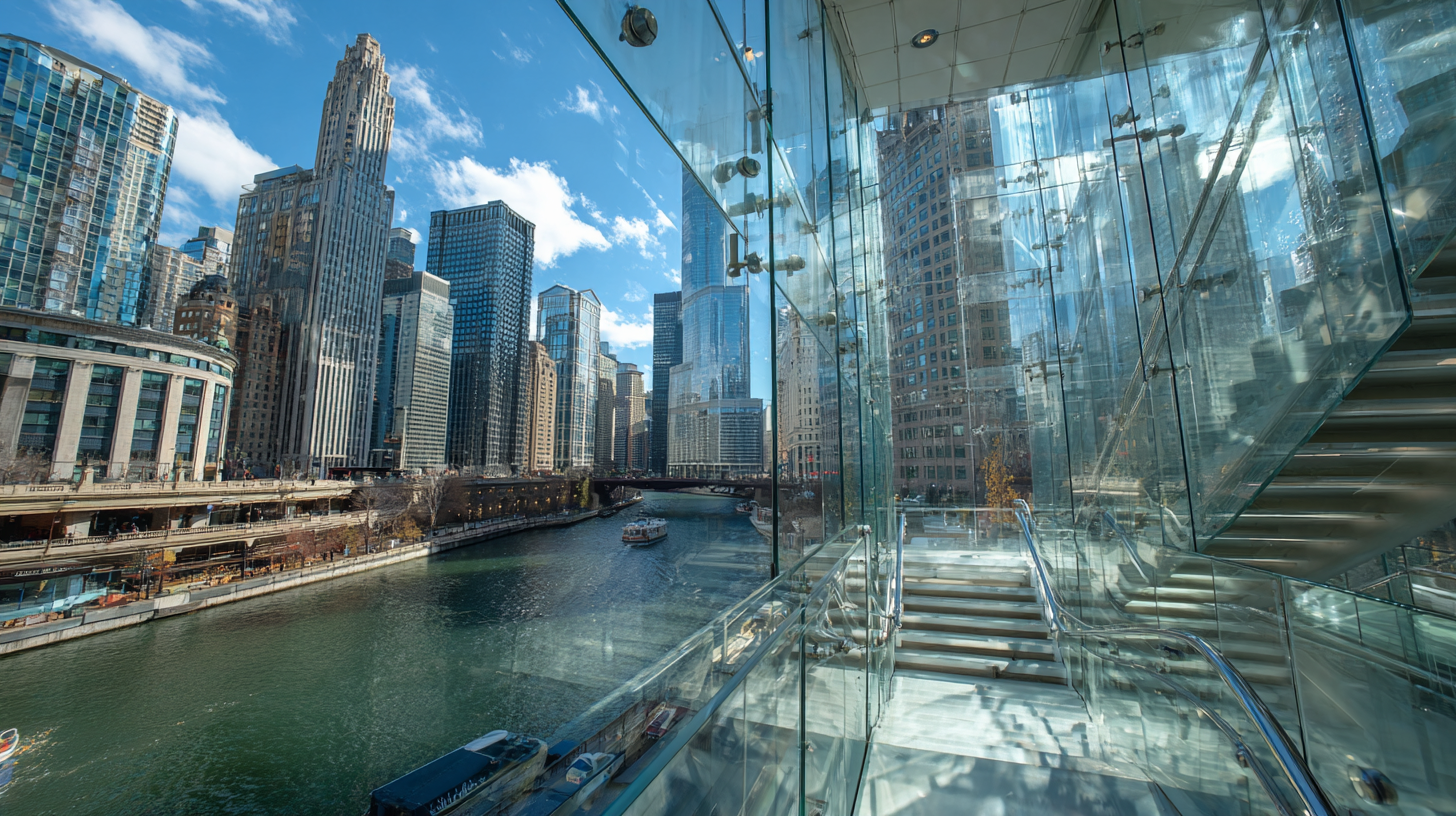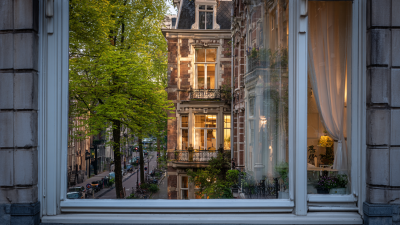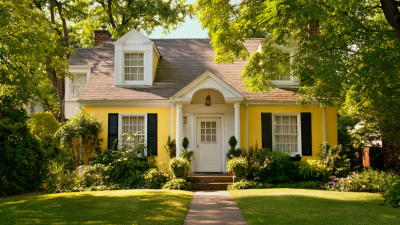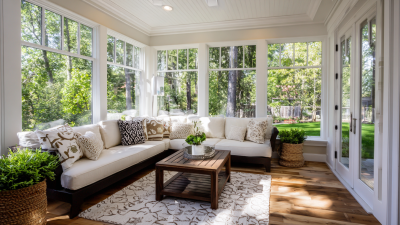The architectural landscape has witnessed a significant transformation with the advent of all glass designs, revolutionizing the way we perceive and interact with our built environments. This trend reflects a broader movement towards minimalism and transparency, inviting natural light to permeate indoor spaces while enhancing the connection between the interior and the surrounding landscape. All glass structures not only elevate aesthetic appeal but also promote energy efficiency and sustainability, making them a preferred choice among modern architects.

As we explore the advantages of all glass designs, it becomes evident that they offer a harmonious blend of functionality and beauty, catering to the evolving demands of contemporary living. This exploration will delve into the key benefits that all glass architecture brings to urban settings, highlighting its role in shaping the future of architectural practices.
All glass designs have become increasingly popular in modern architecture, revered not only for their sleek appearance but also for their ability to create harmonious environments. A report by the American Institute of Architects highlights that approximately 60% of new commercial buildings incorporate significant glass elements. This trend underscores a shift towards transparency and fluidity in architectural aesthetics, allowing natural light to permeate spaces while offering unobstructed views of the surroundings.
The aesthetic appeal of all glass designs lies in their ability to merge indoor and outdoor spaces, thus fostering a sense of openness and connectivity. According to a study published by the Journal of Architectural Engineering, buildings with extensive glass facades reported a 25% increase in tenant satisfaction due to the enhanced visual connection to the natural environment. Furthermore, the use of glass not only elevates the visual impact but also contributes to energy efficiency when combined with advanced solar control technologies, making these designs both beautiful and sustainable. Designers today are increasingly leveraging these benefits, paving the way for innovative and striking architectural landmarks.
| Aspect | Benefits | Aesthetic Appeal | Environmental Impact |
|---|---|---|---|
| Natural Light | Enhances interior brightness | Creates a feeling of openness | Reduces energy costs for lighting |
| Visual Connection | Seamless interaction with surroundings | Offers panoramic views | Promotes harmony with nature |
| Modern Aesthetic | Sleek and contemporary design | Evokes sophistication and luxury | Encourages use of sustainable materials |
| Flexibility in Design | Allows creative architectural solutions | Blends traditional and modern elements | Facilitates natural cooling and heating |
| Maintenance | Durable materials reduce upkeep | Keeps aesthetic appeal over time | Long lifespan of materials |
All glass designs are increasingly popular in modern architecture, and a key benefit of these structures is their energy efficiency. According to a report by the U.S. Department of Energy, buildings account for 40% of total energy consumption in the United States, with a significant portion of this being associated with heating and cooling. All glass structures, when designed thoughtfully, can reduce energy use by maximizing natural light, thereby minimizing reliance on artificial lighting. Advanced glazing technologies now allow for high-performance windows that not only insulate effectively but also reduce heat gain during the summer months.
Tips for enhancing energy efficiency in all glass designs include selecting low-emissivity (Low-E) glass, which reflects heat while allowing in daylight, and using operable windows that promote natural ventilation. Moreover, incorporating dynamic shading systems can help control solar gains and further optimize indoor climates. The use of such solutions can dramatically enhance the sustainability metrics of a building, aligning with the global push towards greener architectural practices.
Recent studies by the National Renewable Energy Laboratory indicate that buildings utilizing energy-efficient glazing can save up to 20% more energy compared to conventional designs. This not only lowers operating costs but also contributes to reducing the carbon footprint of a structure, making all glass building designs a smart choice for eco-conscious architects and developers.
The rise of all-glass designs in modern architecture is significantly underpinned by structural innovations that enhance both safety and aesthetics. Recent studies indicate that advancements in glass technology, such as tempering and laminated glass, have increased the strength and durability of glass facades by up to 400%. This increase not only allows for larger spans of glass but also mitigates the risks associated with breakage. According to the Glass Association, buildings incorporating high-strength glass can achieve a reduction in material weight while maintaining structural integrity, allowing architects greater creative freedom in their designs.
Moreover, the integration of structural silicone glazing systems has transformed the capabilities of all-glass buildings. These systems enable seamless and continuous glass surfaces that are both visually striking and structurally efficient. A report by the International Glass Association highlights that such innovations facilitate a significant reduction in the needed framework, improving energy efficiency and light penetration within the building. As concerns about sustainability rise, these high-performance glass technologies provide solutions that not only enhance the aesthetic value of urban environments but also contribute to energy savings, making all-glass designs a viable option for modern architectural trends.

 The integration of all glass designs in modern architecture has revolutionized the way natural light is utilized within spaces. By leveraging expansive glass surfaces, architects can create environments that blur the lines between indoors and outdoors, allowing light to penetrate deep into building interiors. This not only enhances the aesthetic appeal but also contributes to a dynamic atmosphere that can improve the overall mood and well-being of occupants. The transparency inherent in all glass structures encourages a greater connection with the surrounding environment, fostering a sense of openness and flow that traditional materials cannot achieve.
The integration of all glass designs in modern architecture has revolutionized the way natural light is utilized within spaces. By leveraging expansive glass surfaces, architects can create environments that blur the lines between indoors and outdoors, allowing light to penetrate deep into building interiors. This not only enhances the aesthetic appeal but also contributes to a dynamic atmosphere that can improve the overall mood and well-being of occupants. The transparency inherent in all glass structures encourages a greater connection with the surrounding environment, fostering a sense of openness and flow that traditional materials cannot achieve.
Furthermore, the energy efficiency of all glass designs has improved significantly with advancements in technology. High-performance glazing options now offer excellent thermal insulation, reducing reliance on artificial lighting and heating. This environmentally conscious approach to design not only benefits the planet but also provides long-term cost savings for both builders and occupants. By maximizing natural light, all glass designs enhance the quality of indoor spaces while promoting sustainable living practices, making them a favored choice in modern architectural trends.
All-glass designs in architecture offer a stunning aesthetic appeal but come with their own set of challenges. One of the primary issues is thermal performance. Glass can lead to excessive heat gain in warmer climates and significant heat loss during colder months. This not only affects energy efficiency but also impacts occupant comfort. To address these concerns, architects and designers are increasingly incorporating advanced glazing technologies, including low-emissivity coatings and insulating glass units. These innovations help to regulate temperature by reflecting heat while allowing natural light to permeate the interior spaces.
Another significant challenge is structural integrity. Since glass is more fragile than traditional building materials, ensuring the safety and stability of all-glass structures is paramount. Engineers often integrate structural glass elements, like laminated or tempered glass, to enhance strength. Additionally, innovative framing solutions and anchoring systems are employed to secure glass panels, ensuring they can withstand environmental stresses such as wind loads and seismic activity. By overcoming these hurdles through technology and engineering expertise, all-glass designs can not only fulfill aesthetic aspirations but also provide durable and sustainable architectural solutions.



